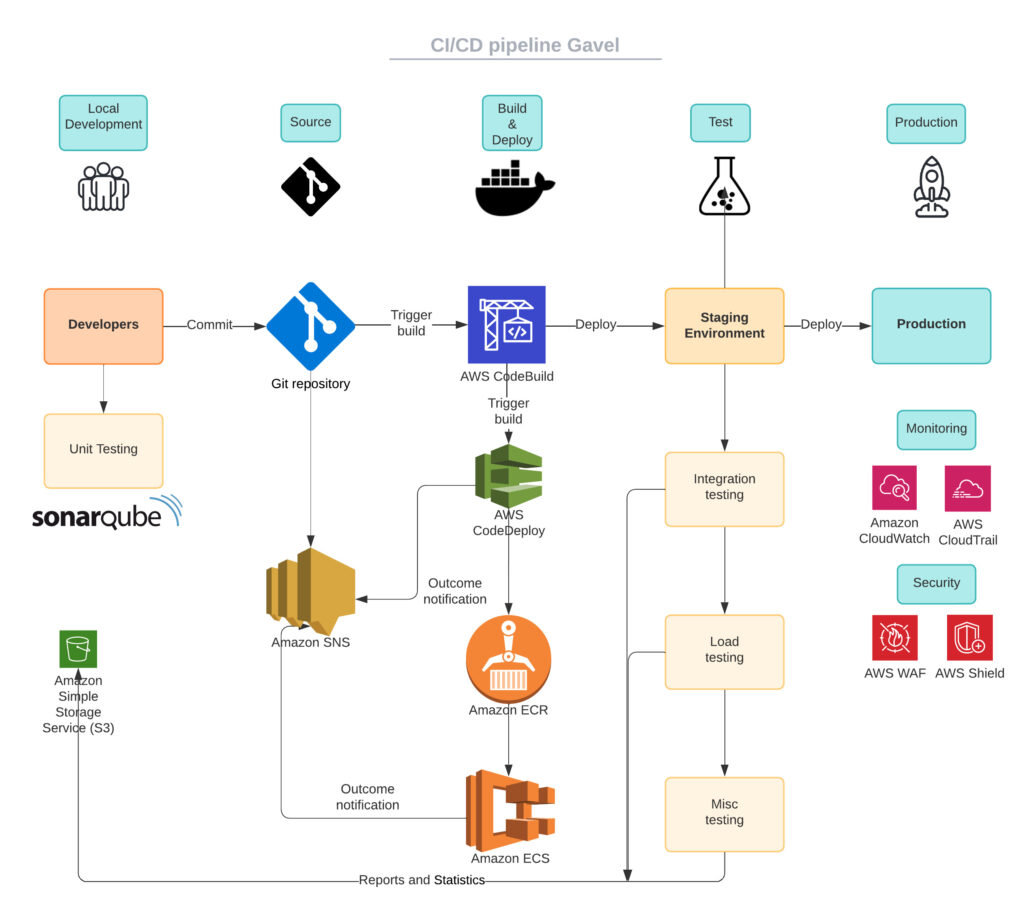Gavel: A live auction platform that combines live video shopping with live auctions
Category: Auction, eCommerce
Services: DevOps, Cloud Architecture Design and Review
Category: Auction, eCommerce
Services: DevOps, Cloud Architecture Design and Review

Gavel is a live auction platform that brings collectors, buyers, and sellers together. Gavel combines live video shopping with live auctions to add fun and discoverability to online purchasing. Gavel allows you to chat in the Gavel app with like-minded people in the virtual room, ask questions during the show, and bid on your favorite items directly.
The manual and error-prone deployment process of the client posed challenges, leading to delays and inconsistencies. This impacted the efficiency and reliability of their operations, causing disruptions to their business. As a small and medium business, they required an automated deployment solution to ensure consistent and reliable deployments.
To address the deployment challenges faced by the SMB client, we proposed an automated deployment solution using AWS services:
Automation with AWS CodePipeline
We leveraged AWS CodePipeline, a fully managed continuous delivery service, to automate the deployment process. This solution eliminated manual intervention and streamlined the deployment workflow. CodePipeline automatically built and tested the client’s code, and then deployed it to the specified environment. By triggering deployments based on code changes in the source code repository, the process became efficient and reliable.
Infrastructure as Code with AWS CloudFormation
We utilized AWS CloudFormation to manage the client’s infrastructure. By defining their infrastructure as code, we automated the creation and management of their resources. This approach ensured consistent and reproducible infrastructure deployments, reducing errors and improving overall stability. The use of CloudFormation allowed the SMB to easily manage their infrastructure without manual configuration, thus saving time and effort.
Code Quality and Integrity
To maintain code quality and integrity, we integrated several tools within the pipeline.Pre-commit hooks were implemented to enforce coding standards and best practices. SonarQube was used for code analysis, identifying potential security vulnerabilities and maintaining code quality. Unit testing frameworks were incorporated to verify the functionality and reliability of the codebase. These measures ensured that the code met the required standards, minimizing risks and enhancing the overall quality of the software.
Improved Development Process and Reliable Deployments:
With the implementation of the CI/CD pipeline, the SMB client achieved faster and more reliable deployments. The automated pipeline eliminated the need for manual intervention, reducing the risk of human error and ensuring consistent and dependable deployments.
Efficient Resource Utilization and Time Savings:
By automating their testing and deployment processes through the pipeline, the client optimized their resource utilization and achieved significant time savings. Manual deployment tasks that were previously time-consuming and prone to errors were now automated, freeing up valuable time for the client’s development team.
Cost Savings and Resource Optimization with AWS CodePipeline:
The adoption of AWS CodePipeline brought cost savings to the SMB client. By automating their deployment process, they reduced the resources and effort required to manage deployments. This resulted in cost optimization and maximized efficiency. With streamlined deployments, the client could allocate resources more effectively, directing them towards other critical areas of their business.
Enhanced Scalability and Flexibility:
The CI/CD pipeline offered scalability and flexibility for the SMB client. With automated deployments, they could easily scale their infrastructure and accommodate increasing user demands without manual configurations. This agility allowed them to respond to market needs quickly and efficiently, ensuring a seamless experience for their users.
Improved security:
AWS KMS (Key Management Service) offered simplified and secure cryptographic key management, enabling encryption of data at rest or in transit across AWS services and applications.
